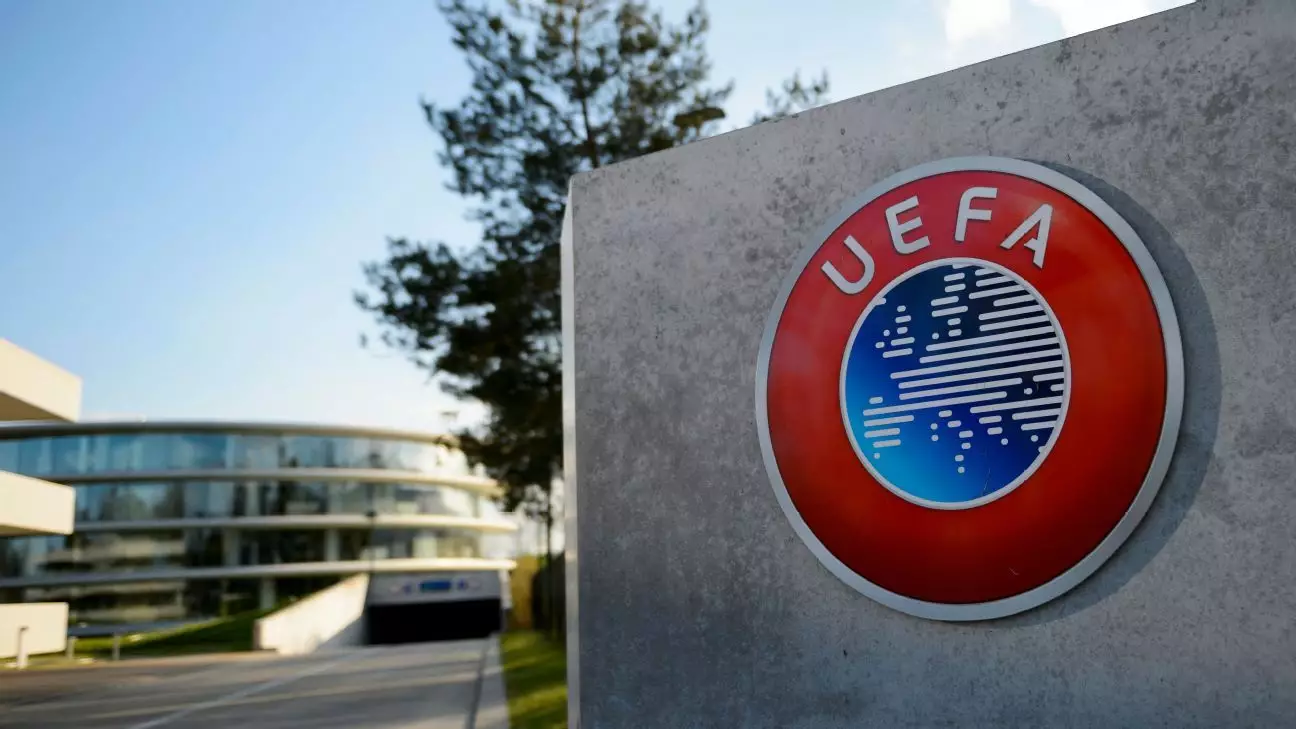In a landscape where football’s elite competitions dominate, A22 Sports is making headlines once again with their proposed alternative: the “Unify League.” Announced on a recent Tuesday, this initiative aims to create a cross-border tournament that directly competes with UEFA’s storied Champions League, Europa League, and Conference League. This bold move comes on the heels of a European Court of Justice (ECJ) ruling that questioned the dominance of UEFA’s regulations, suggesting that they must be more accommodating to rival tournaments—provided those tournaments are meritocratic and inclusive in their qualification processes.
What A22 is attempting to do is not straightforward. While the ECJ ruling has opened a door for competition, UEFA quickly adjusted its regulations to maintain a firm grip on European football. A22 asserts that these new rules still place undue restrictions on rival leagues, specifically through clauses that appear to favor UEFA’s monopoly. This impasse not only clarifies the legal hurdles that lie ahead but also highlights the underlying tensions between the two entities.
The fact that UEFA is now under scrutiny sets the stage for a potential legal showdown. A22 has already flagged multiple aspects of UEFA’s updated regulations that they believe contravene the ECJ ruling. Most notably, they point to clauses that derogate any new tournament that might “adversely affect the good functioning” of UEFA’s competitions. Yet it could be argued that competition inherently disrupts existing models, leading to a more dynamic football marketplace.
While this initial legal battle may take center stage, it’s the clubs’ participation—and ultimately their financial backing—that could determine the success of the Unify League. Even if A22 successfully navigates these legal obstacles, they face an uphill battle in convincing clubs that shunning established tournaments will serve their best interests. Clubs thrive not only on prestige and visibility but also on the vital revenue these established tournaments provide.
As the Unify League sets out to establish its business model, several questions arise over its financial viability. Plans for a streaming service, the Unify Platform, aim to broadcast games for free but will include advertising. While A22 believes this model will attract a solid audience and generate revenue, one must consider why established broadcasters haven’t adopted a similar approach if it proves profitable. Existing competitions have focused on premium subscriptions, likely due to their proven efficacy in generating revenue.
The Unify League claims that embracing a free-to-air model with affordable premium options could yield greater exposure and engagement. However, this bold prediction struggles against the reality of how established broadcasting contracts have shaped media rights over the years. Given that UEFA currently pulls in around €4.4 billion from its tournaments, A22 must demonstrate that it can not only generate similar revenue but exceed it.
A22’s vision for the Unify League comprises four leagues, with the top tiers dubbed the Star League and Gold League. Each league is structured to ensure significant match play, with a total of 246 games planned across these competitions. The structure sounds promising, but there’s a catch—namely, the potential for repetitiveness among participating clubs and the risk of “meaningless” fixtures as well.
Unlike the Champions League’s proven “Swiss Model,” A22’s model hinges on clubs consistently performing year-round, and any slip-ups could lead to stagnant or uninspired matchups. This scenario raises questions about whether the anticipated excitement can really be delivered. Further complicating matters is the mandate for these leagues to be truly meritocratic, which could lead to uncertainty for clubs who crave guaranteed spots and consistent revenue streams.
Securing commitments from the world’s top clubs could be the biggest challenge for A22. Historically, elite teams have shown a reluctance to gamble on new and unproven ventures, preferring structures that guarantee revenue and exposure. Given that some top-tier clubs might find themselves having to qualify for a league instead of receiving automatic entries, A22 faces a conundrum they must overcome in order to attract reputable football powerhouses.
Without an enticing financial package or guarantees of success and security, the willingness of clubs to join the Unify League—especially amid UEFA’s established prestige—will remain doubtful. There is even a possibility of a fragmented football landscape where different clubs are tied to opposing competitions. Such a split could dilute the brand of both A22’s Unify League and UEFA’s existing tournaments.
While the ambitions behind the Unify League may resonate with those seeking change in football’s structure, the practical execution of such a project remains rife with challenges. Legal scrutiny, financial feasibility, and the difficult task of attracting clubs present substantial hurdles that A22 has yet to navigate effectively.
As A22 pushes onward, football’s governing bodies and clubs alike will be watching closely, ready to either embrace this alternative or reinforce the status quo. In a landscape that is always evolving, football’s future may hinge on whether the Unify League can strike the right balance between innovation and financial stability. The coming months will be critical in determining if A22 can convert its vision into a sustainable reality.
